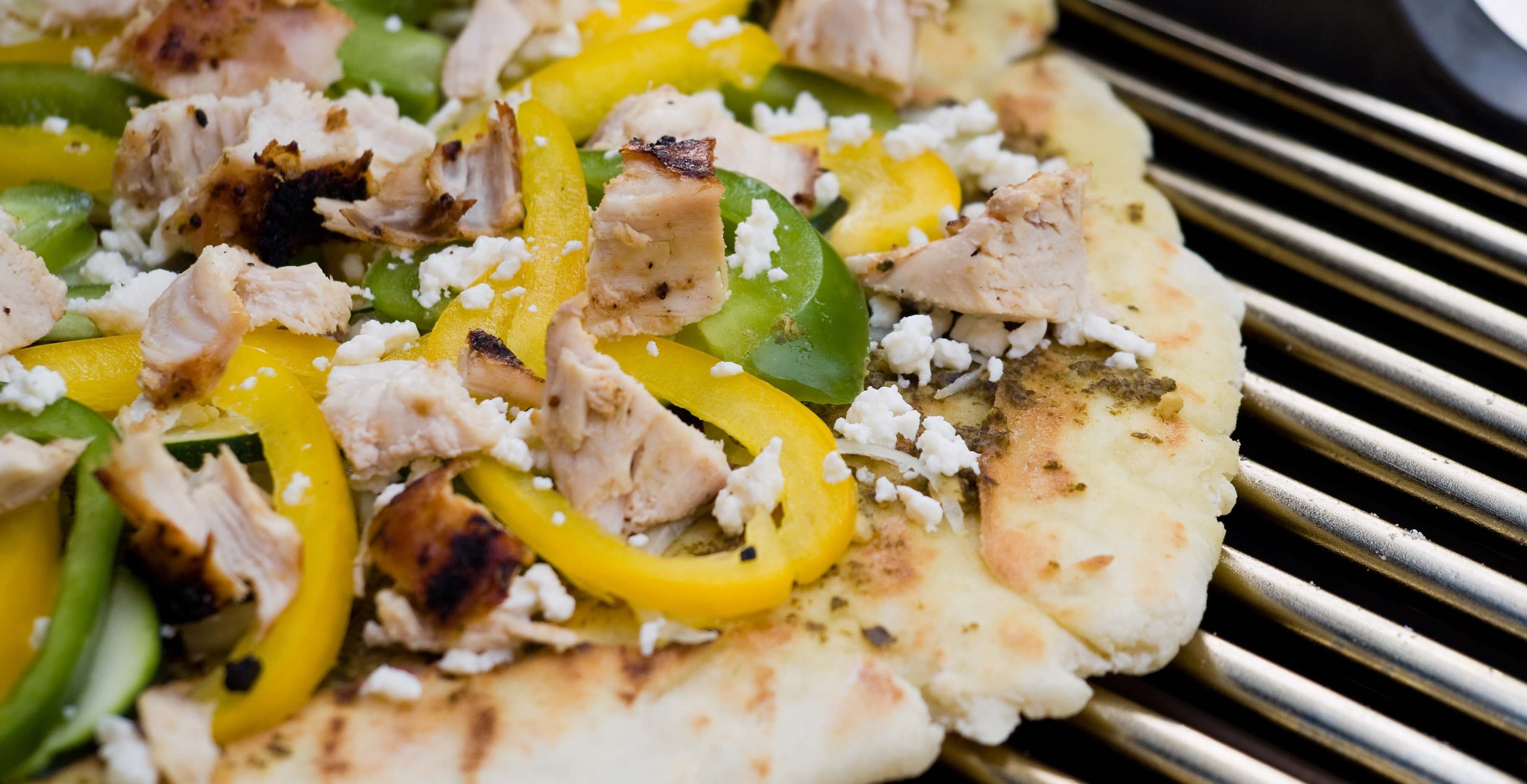Our Guide to Grilled Pizza


Making grilled pizza sounds like a potentially disastrous endeavour for many home cooks. Placing pizza dough onto a hot grill, flipping it around, and then adding toppings seems like an activity fraught with culinary peril. While grilled pizza does require fairly quick handiwork to achieve the desired results, a little planning and preparation goes a long way towards streamlining the process.
The right dough for the job
Grilled pizza can be made using homemade or store-bought dough. Dough that is somewhat drier and less sticky than typical pizza dough will yield the best results. Stickier pizza dough is more likely to drop down between the grate when it’s first placed on the grill. If the dough being used feels tacky, knead it for a few seconds on a lightly floured surface. Test whole wheat and gluten-free doughs on the grill before making pizza as they have the tendency to be stickier than regular pizza dough.
Mise en place makes for easy assembly
Mise en place, a French culinary term meaning “everything in its place,” always makes cooking easier but it’s absolutely essential for making grilled pizza. Have all of the toppings prepped and placed into individual bowls or containers, including any sauces, pesto, flavoured oils, and cheeses being used.
Topping tips for the best grilled pizzas
Grilled pizzas offer plenty of opportunity to get creative with topping choices, the only caveat is that the toppings can’t be very wet, or the dough will be more likely to fall apart. Use a scant amount of tomato sauce, pesto or flavoured oil as a sauce, about half as much as you would use on a regular pizza. Consider the abundance of local produce available in the summer and get creative with seasonal fruits and vegetables; nectarines, sweet peppers, figs, summer squash, blackberries, and roasted corn are all delicious toppings for a grilled pizza. Fresh herbs or dried chilies sprinkled on just before the pizza is done or immediately afterwards adds a bright pop of colour and flavour. Meat toppings should be used sparingly in order to avoid heat flare-ups on the grill; prosciutto, pulled pork or chicken, pre-cooked pancetta, and fennel salami all work well.
Cheeses for every taste
When selecting cheese for grilled pizzas it’s important to use one that isn’t wet and to use small amounts. Firmer cheeses such as ricotta salata, Parmigiano-Reggiano, pecorino romano or pepato, fresh chevre, or any crumbly blue cheese are ideal as they won’t melt all over the pizza while it’s cooking. If using buffalo mozzarella or bocconcini tear the cheese into small pieces and drain on a paper towel for 15 minutes before using.
Get grilling
Preheat the grill to medium-high heat while preparing the dough. Stretch the dough into a roughly pizza-sized shape, making sure that it’s slightly thicker than a thin crust pizza so that it will be sturdy enough not to fall through the grate. Brush olive oil on one side of the pizza dough and slide onto the hot grill. Close the grill and cook for 2 minutes, lift the lid up and check to see if it’s browning on the bottom and beginning to bubble on the top. If the pizza is cooking unevenly or needs more time rotate it approximately 90 degrees and grill for another 1-2 minutes.
Assembling the pizza
The pizza should now be cooked over indirect or low heat, depending on the type of grill being used. The grilled dough can either be moved to a work station or the dough can be carefully flipped over and the pizza can be assembled directly on the grill. If removing from the grill, place the pizza onto a work surface with the cooked side facing up. Brush with a small amount of olive oil and begin with a small amount of sauce, pesto or flavoured oil (don’t brush the pizza with olive oil if using this as a base). Add the rest of the toppings, finishing with a scant amount of cheese. Grill over low or indirect heat, covered, for anywhere between 3 and 9 minutes. Remove from heat and finish with fresh herbs or dried chilies.
